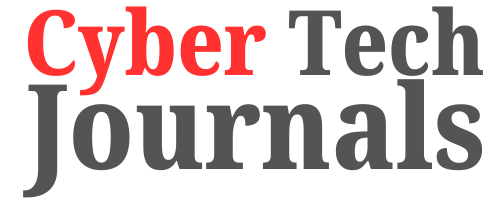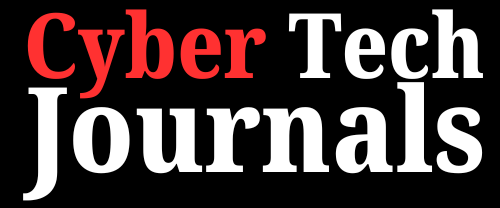The healthcare industry has embraced digital transformation at breakneck speed—electronic health records (EHRs), telemedicine, AI diagnostics, and connected medical devices are now integral. But with this digital evolution comes a sobering reality: healthcare providers have become prime targets for cybercriminals. Let’s understand Cybersecurity for Healthcare.
From ransomware attacks paralysing hospital operations to phishing scams compromising sensitive patient records, the stakes in healthcare cybersecurity are uniquely high. It’s not just about data breaches—it’s about lives.
The Rising Tide of Threats in Healthcare
Healthcare organisations face a growing onslaught of cyber threats, driven by outdated systems, high-value personal data, and often limited IT resources.
1. Ransomware Attacks
Ransomware has become one of the most disruptive threats in healthcare. In 2023, over 48 million patient records were exposed due to ransomware globally. Hospitals are often forced to cancel appointments, reroute emergency services, or even revert to paper records during an attack.
Example: The 2023 ransomware attack on All India Institute of Medical Sciences (AIIMS) disrupted services for days, with critical patient records compromised and servers crippled.
2. Phishing & Social Engineering
Staff—doctors, nurses, admin personnel—remain the weakest link. Cybercriminals exploit trust through phishing emails, posing as internal IT teams or government bodies to steal login credentials or install malware.
3. Insider Threats
Whether malicious or negligent, insiders such as employees or third-party contractors pose a significant risk. Weak access controls or misconfigured permissions can expose thousands of patient files.
4. Unsecured IoT & Medical Devices
MRI machines, infusion pumps, and other smart medical devices often lack proper security. If hijacked, these could be used to access the broader hospital network or disrupt patient care.
Regulatory Frameworks: Compliance Isn’t Optional
HIPAA (USA)
The Health Insurance Portability and Accountability Act (HIPAA) mandates strict data protection measures for patient health information in the US.
GDPR (EU)
The General Data Protection Regulation (GDPR) requires healthcare entities processing EU citizen data to ensure transparency, consent, and strong data security.
DPDP Act (India)
India’s new Digital Personal Data Protection (DPDP) Act places similar responsibilities on healthcare providers, including the need for data localisation, consent-driven processing, and breach notification.
ISO/IEC 27001 & HITRUST
Global certifications like ISO 27001 or frameworks like HITRUST CSF help healthcare providers standardise their information security practices and build trust.
Best Practices for Securing Patient Data
Healthcare organisations must adopt a multi-layered defence strategy. Here’s what that looks like in practice:
1. Encrypt All Patient Data
Whether at rest in databases or in transit across networks, encryption ensures that data is unreadable to unauthorised parties.
2. Implement Network Segmentation
Segregate critical healthcare systems (e.g. radiology, labs) from general office networks to limit lateral movement in case of a breach.
3. Strengthen Access Control
Enforce least privilege access. Role-based access ensures staff only view data essential to their role. Combine this with strong password policies and multi-factor authentication (MFA).
4. Secure EHR Platforms
Electronic Health Records should have built-in security controls including audit logging, automatic log-off, and role-based permissions.
5. Regular Security Awareness Training
Educate staff about phishing red flags, secure browsing habits, and incident reporting protocols. Simulated phishing drills are highly effective.
6. Regular Vulnerability Management
Conduct periodic vulnerability scans and patch outdated software promptly—especially for legacy systems.
Incident Response & Risk Management
Preparedness is as important as prevention. Healthcare providers must build a robust incident response plan that includes:
- Threat detection and alerting via SIEM tools
- Incident containment protocols to isolate infected systems
- Patient safety procedures to ensure continuity of care during a breach
- Post-incident review and regulatory breach reporting
Risk assessments should be conducted annually—or after any significant IT change—to identify new vulnerabilities and update security policies accordingly.
Strategic Recommendations for Healthcare Leaders
- Invest in cybersecurity as patient safety. It’s no longer just an IT issue.
- Appoint a Data Protection Officer (DPO) or security head to oversee compliance.
- Embed security by design in all digital health initiatives, from telemedicine to mobile apps.
- Collaborate with national cyber bodies for threat intelligence sharing (e.g. CERT-In in India).
Building Resilient Digital Care
The future of healthcare is undeniably digital—and profoundly vulnerable. For healthcare providers, protecting patient data is not just a regulatory requirement or reputational concern—it’s a moral obligation. By embracing robust cybersecurity practices, organisations can protect their patients, their operations, and their future.

















Leave a comment